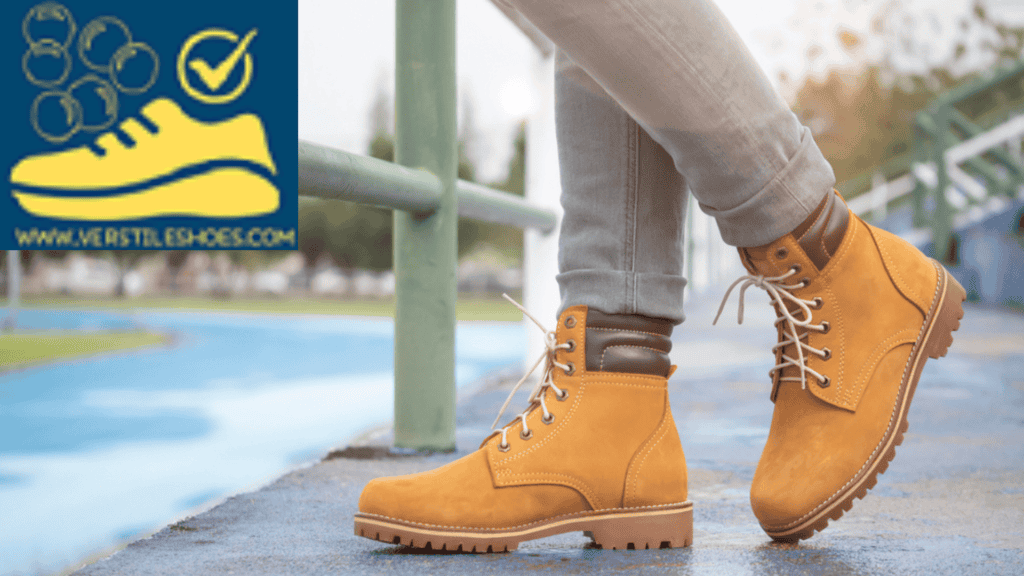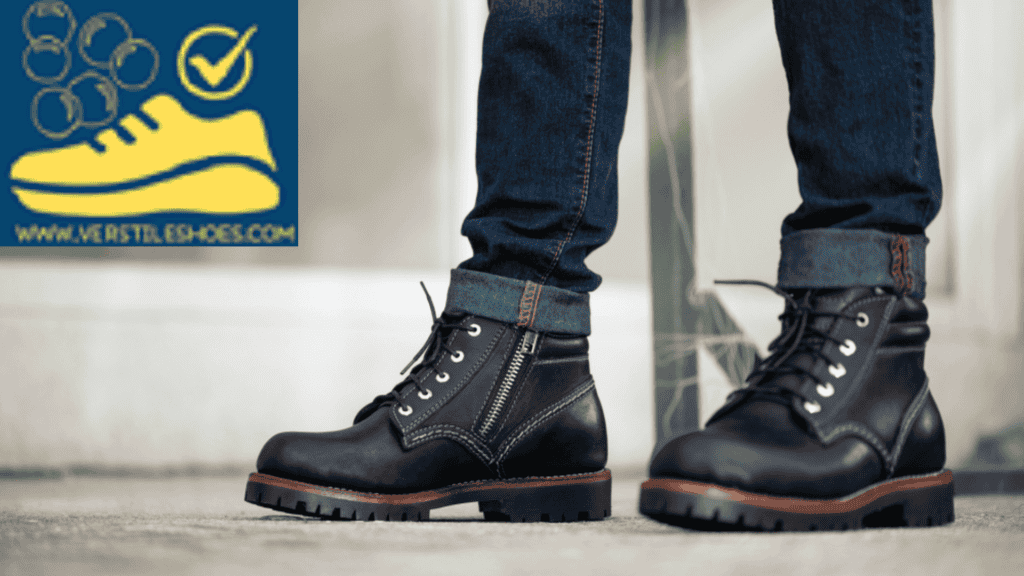Introduction
Ankle cuts by boots are painful scratches or injuries that occur around the ankle area due to friction or pressure from the boots rubbing against the skin. These cuts can result in discomfort, swellings and even open injuries if not addressed. It’s very important to understand how to prevent boots from cutting ankle to avoid these issues. Properly fitting boots and wearing thick socks can help reduce friction and cushion the ankle.
Additionally, using moleskin or adhesive bandages on areas disposed to rubbing can provide extra protection. Keeping boots clean and well-maintained also prevents rough edges or seams from causing irritation. Regularly moisturizing the skin around the ankle can also help prevent resistance. Overall, knowing how to prevent boots from cutting ankle is essential for maintaining comfort and preventing injuries during extended wear.
Protecting your ankles from cuts is essential for maintaining comfort and avoiding injury while wearing boots. Knowing how to prevent boots from cutting ankle can make a significant difference in your overall well-being. Properly fitted boots and socks perform a dynamic part in preventing friction and rubbing against the ankle area.
Additionally, choosing with padded collars or ankle boots supports can provide extra softening and reduce the risk of cuts. Regularly inspecting your boots for any signs of wear or damage can help address potential issues before they become problematic. Moreover, utilizing moleskin or specialized stuffing can offer additional protection in areas lying to relief. Properly lacing your boots can also distribute pressure evenly and minimize the likelihood of cuts.
Ultimately, prioritizing preventive measures and investing in quality footwear can ensure your ankles stay safe and comfortable throughout various activities. Understanding how to prevent boots from cutting ankle empowers individuals to enjoy their adventures without unnecessary discomfort or injury.

Understanding: How to Prevent Boots from Cutting Ankle
Understanding ankle cuts is very important for anyone who spends significant time on their feet especially in boots. Ankle cuts can result from friction, pressure or improper fit of the boots causing discomfort and potential injury. To avoid this, it’s essential to know how to prevent boots from cutting the ankle effectively. Properly fitted boots with suitable ankle support can significantly reduce the risk of cuts and burns.
Additionally, wearing moisture-wicking socks can help minimize friction and irritation. Regularly checking and adjusting lacing tension can also ensure a snug yet comfortable fit. Moreover, investing in boots with expanded collars or ankle cushions can provide extra protection. Understanding the factors contributing to ankle cuts and taking positive measures is key to maintaining comfort and preventing injury during prolonged wear. So, learning how to prevent boots from cutting the ankle is not just about comfort but also about maintaining foot health and mobility.
Types of Ankle Cuts Caused by Boots
Different types of ankle cuts caused by boots include scrapes, swellings and pressure sores. Cuts occur when the boot rubs against the skin leading to irritation and sometimes grazes. Blisters form due to friction between the boot and the skin resulting in painful fluid-filled pockets. Pressure sores develop from prolonged pressure on specific areas of the ankle leading to tissue damage. Overall, knowing how to prevent boots from cutting ankle, properly fitting boots and wearing appropriate socks can help prevent these issues.
Friction Blisters:
These occur when the boot rubs against the skin creating friction that leads to painful blisters. They commonly form on the back of the heel or sides of the ankle.
Pressure Sores:
Pressure from ill-fitting boots can cause sores on the ankle particularly where the boot exerts the most pressure. These sores can be painful and prone to infection if not properly addressed.
Achilles Muscle Irritation:
Tight boots can irritate the Achilles muscle leading to discomfort and potential inflammation. This irritation can limit mobility and cause pain with movement.
Cuts and Abrasions:
Sharp edges or improperly fitted boots can cause cuts and abrasions around the ankle area. These wounds can be minor or severe and depending on the intensity of the contact.
Bunion Aggravation:
Boots that are too narrow or have rigid toe boxes can aggravate bunions, causing pain and discomfort around the joint of the big toe. This can affect overall mobility and comfort.
Skin Irritation:
Certain materials or seams in boots can irritate the skin, leading to redness, itching and discomfort. This irritation may worsen with prolonged wear.
Impact Bruising:
Insufficient padding or support in the boots can lead to bruising of the ankle bones upon impact. This can result in soreness and tenderness in the affected area.
Muscle Strain:
Boots that restrict natural movement or have inadequate support can cause strain on the muscles around the ankle. This strain can lead to stiffness, pain and decreased flexibility over time.

Common Symptoms and Signs
- Swelling around the ankle.
- Pain, especially when walking or moving the ankle.
- Redness or warmth in the affected area.
- Difficulty bearing weight on the injured ankle.
- Bruising or discoloration.
- Tenderness to the touch.
- Limited range of motion.
- Feeling of instability in the ankle.
- Visible cuts or wounds on the skin.
- Bleeding from the injury site.
- Popping or clicking sensation when moving the ankle.
- Numbness or tingling in the foot or toes.
- Difficulty putting on shoes or socks.
- Stiffness in the ankle joint.
- Difficulty standing or balancing.
- Pain that worsens with activity.
- Difficulty flexing or extending the ankle.
- Sensation of throbbing or pulsing in the ankle.
- Formation of a scab over the wound.
- Increased pain or swelling over time.
Factors Contributing to Ankle Cuts
Ankle cuts caused by boots can be influenced by several factors. The tightness of the boot around the ankle, material of the boot and the style of the boot can all contribute to potential cuts or scratches. Additionally, protracted friction or pressure on the ankle area during activities such as hiking or long wear can exacerbate the risk of cuts. Proper fitting and packing learning how to prevent boots from cutting ankle can help moderate these issues.
Boot Design and Fit:
The design and fit of boots perform an important part in preventing ankle cuts. Choose for boots with padded collars and ankle support to minimize friction and rubbing against the skin. Properly fitted boots reduce the likelihood of pressure points that can cause cuts.
Material Quality:
High-quality materials can prevent boots from cutting into the ankle. Look for boots made from soft, supple leather or synthetic materials that don’t cause excessive friction. Quality materials reduce irritation and discomfort, lessening the risk of ankle cuts.
Break-in Period:
Allow sufficient time for the boots to break in before extended wear. Gradually wearing them for short periods helps the materials conform to your foot shape, reducing pressure points and potential cuts. Properly breaking in boots is essential to prevent discomfort and ankle injuries.
Sock Choice:
Choosing the right socks can contribute to preventing ankle cuts caused by boots. Select for moisture-wicking socks that provide cushioning and reduce friction. Proper socks create a barrier between the boot and the skin minimizing the risk of cuts and blisters.
Regular Maintenance:
Maintain your boots regularly to prevent wear and tear that could lead to ankle cuts. Keep them clean and conditioned to preserve the material’s integrity and prevent rough edges or seams from causing irritation. Regular maintenance prolongs the lifespan of your boots and enhances comfort.
Proper Lacing Technique:
Utilize proper lacing techniques to ensure a secure yet comfortable fit. Avoid over tightening, as it can create pressure points and increase the likelihood of cuts. A balanced lacing pattern distributes pressure evenly, reducing the risk of irritation and cuts around the ankle area.
Cushioning Inserts:
Consider using cushioning inserts to provide additional padding and support inside the boots. Inserts help distribute pressure more evenly and reduce friction, minimizing the risk of cuts and blisters. Choose inserts designed specifically for ankle support to enhance comfort and prevent injuries.
Regular Inspections:
Periodically inspect your boots for signs of wear or damage that could lead to ankle cuts. Check for worn-out seams, sharp edges, or areas of excessive friction. Promptly addressing any issues ensures that your boots remain comfortable and safe to wear, reducing the risk of ankle injuries. Regular inspections are fundamental for maintaining the integrity of your footwear and preventing discomfort.
Tips While Wearing Boots
When wearing boots, it’s important to know how to prevent boots from cutting ankle and avoid ankle cuts. Make sure your boots fit well and aren’t too tight around the ankles. Choose for socks that provide cushioning and protection to prevent rubbing and irritation.
- Wear thick socks to cushion your ankle against boot friction.
- Break in new boots gradually to prevent chafing.
- Use moleskin or padded inserts to reduce rubbing on ankles.
- Ensure proper boot size to prevent tightness around ankles.
- Apply petroleum jelly or anti-chafe balm to sensitive areas.
- Opt for boots with cushioned ankle support.
- Avoid wearing boots for extended periods without breaks.
- Keep boots clean to prevent debris from causing irritation.
- Use ankle braces for added support if prone to cuts.
- Consider wearing high-cut socks for extra protection.
- Stretch ankles before and after wearing boots to reduce strain.
- Replace worn-out boots with better ankle support.
- Choose boots with soft, flexible material around the ankle.
- Pad ankle areas with foam or gel inserts for comfort.
- Keep toenails trimmed to avoid accidental cuts from boots.
- Avoid tight lacing around the ankle to prevent pressure points.
- Rotate between different pairs of boots to avoid consistent pressure.
- Apply a healing ointment to cuts and blisters for faster recovery.
- Elevate legs when resting to reduce swelling from cuts.
- Consult a podiatrist for persistent ankle issues caused by boots.

Bottom Lines
Understanding how to prevent boots from cutting ankle is essential for maintaining comfort and foot health. By prioritizing proper boot fit, cushioning, regular maintenance and individuals can minimize the risk of painful abrasions and injuries. Taking proactive measures such as wearing thick socks, using moleskin and employing proper lacing techniques can significantly reduce friction and pressure on the ankles.
Additionally, investing in quality footwear with adequate ankle support can provide extra protection during various activities. By implementing these preventive strategies, individuals can enjoy wearing boots without the discomfort of ankle cuts. Remember, prevention is key to ensuring a pleasant and injury-free experience while wearing boots. So, next time you lace up your boots, keep these tips in mind to keep your ankles happy and healthy. How to prevent boots from cutting ankle is not just a concern; it’s a practical approach to maintaining foot comfort and mobility.
Related Posts
Pneumatic Walking Boot: A Comprehensive Guide
Walking Boot for Plantar Plate Tear: Impressive Guideline
Shoes for Clubfoot Adults: An Amazing Guide
FAQs
How can I prevent my boots from cutting into my ankles?
Choose well-fitted boots with padded collars and wear thick socks for cushioning.
What should I do if I notice signs of ankle cuts while wearing boots?
Apply moleskin or adhesive bandages to areas prone to rubbing for extra protection.
Why is it essential to maintain proper boot hygiene?
Regularly cleaning and maintaining boots prevent rough edges or seams from causing irritation.
How can I ensure my boots provide enough ankle support?
Opt for boots with cushioned ankle support or consider using cushioning inserts.
What are some quick tips for preventing ankle cuts while wearing boots?
Wear high-cut socks, use petroleum jelly on sensitive areas, and avoid tight lacing to prevent pressure points.


I am truly thankful to the owner of this web site who has shared this fantastic piece of writing at at this place.